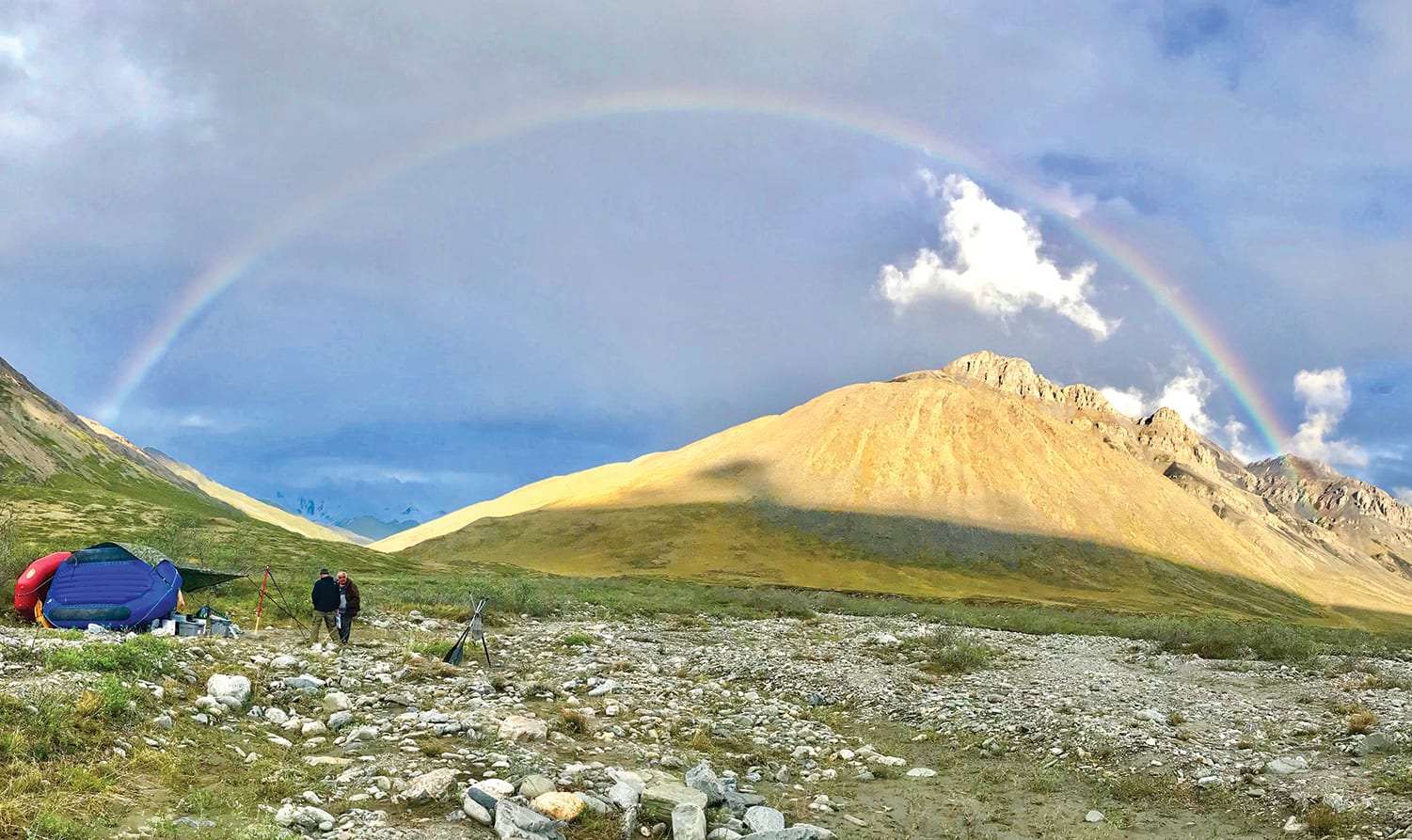
02 Dec The Fight to Protect the Arctic Refuge
Tahoe students engage in the battle to stop oil exploration in one of the wildest places on earth
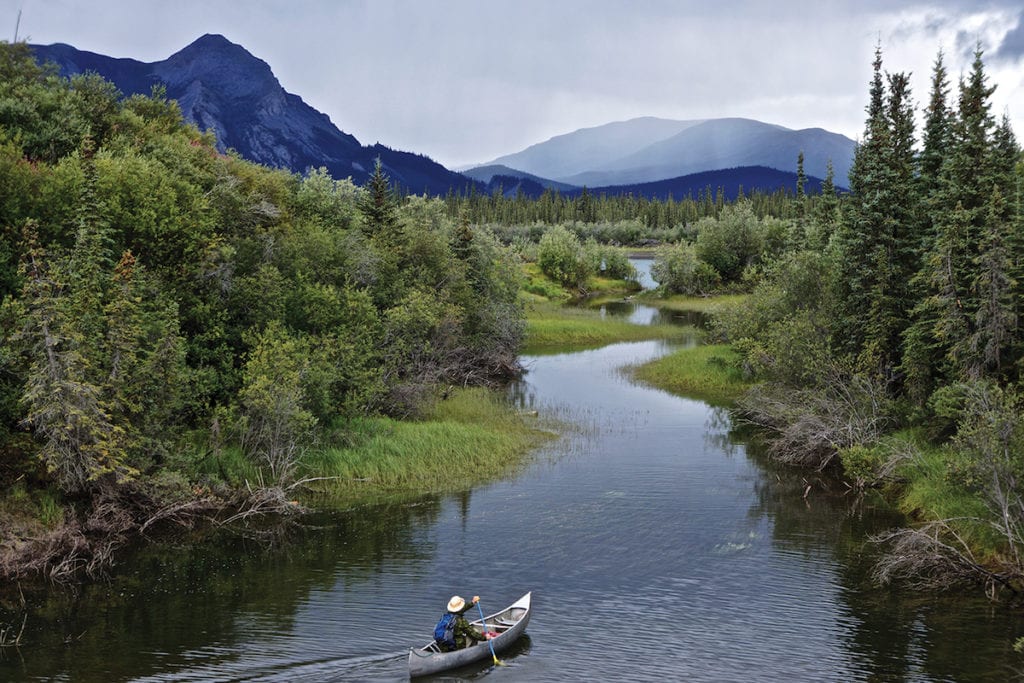 Chris Budicin paddles from Arctic Village into the Arctic National Wildlife Refuge
Chris Budicin paddles from Arctic Village into the Arctic National Wildlife Refuge
I almost made it to the Arctic National Wildlife Refuge back in 2003. My friend and I had packed up her truck and left our Alpine Meadows home for a long road trip to the Land of the Midnight Sun. She was saying goodbye to Tahoe, starting a new life chapter in the ski town of Girdwood. For me, it would be the first of many trips to Alaska, a place that, as a skier, I had long dreamt about experiencing.
When we arrived in Fairbanks after a week on the road, we had a choice: Stay on the paved roads heading south toward Denali, or travel the one road north beyond the Arctic Circle. I had a particular pull to take the Dalton Highway north after hearing stories about “the last great wilderness” that was supposedly somewhere up there.
But that first night in Alaska, we met a local who congratulated us on our journey but warned us, “That road up there, it eats vehicles. If you break down, which you probably will…”
That was all my friend needed to hear. After all, I was eventually headed back to Tahoe. She was not, and was going to call her truck home until she found her way in Girdwood.
Maureen and I traveled as much of Alaska as we could that late spring, but I never forgot about missing out on visiting the upper reaches of The Last Frontier state.
As the years passed I found myself developing a sense of place in Alaska’s famed Chugach Mountains, working seasonally as a ski guide. It wasn’t until I got a seemingly out-of-the-blue phone call one day that my trajectory would change back to the far north.
Sara James is an Elder of the Gwich’in tribe, a group of Indigenous Athabaskans who have called the area now known as the Arctic Refuge home since time immemorial. Sarah had read an article I wrote for Indigenous Action Media, heard that I was an educator at Sierra Nevada College in Incline Village and invited me to bring students up to her home. She offered to share the ways of the Gwich’in and to teach us about the greater significance of protecting her home, the Arctic Refuge.

From left, Jillian Raymond, author Brennan Lagasse, Grant Furlan, Gwich’in Elder Sarah James, Gwich’in Matriarch Audrey Tritt, Rachel Blum and Keck Angle during an Arctic Village field course supported by Sierra Nevada College
Sense of Place
Respect for one’s home is one thing that binds the human race. Living in an age where human divisions have become daily headlines, it can be easy to forget that we all yearn for a sense of place, and an attachment to community. No matter where you are in this world, chances are you care about your home. This is a rallying point, something that can bring people together rather than tear them apart, whether we look to our backyard in Tahoe, or to seemingly far-off places like the Arctic.
In Tahoe, we have it pretty good. We live in a place that many travel to from all over the world to experience. Take a closer look next time you are on a seemingly mundane commute on Highway 89 around Emerald Bay. It is more than likely that someone else is posted up in the area for the first time, completely blissed out, becoming more inspired by the second by the natural beauty that locals are able to experience daily.
But did you know there was once a plan to build a bridge over the mouth of Emerald Bay? Imagine that. At the time, the Sacramento Bee called the plan “a tragic mistake bordering on a crime.” An alternative plan to build a highway above the bay, blasting a tunnel through the mountains to make way for an anticipated population boom, was also on the table.
What stopped the plans? A long-term look by those who called Tahoe home, who resisted the idea that growth was inevitable and the natural beauty of the area had to take a hit as a result. It was not until 1969 when Emerald Bay was designated a National Natural Landmark that the idea was permanently shelved.
In many ways this combination of political action, and care for one’s backyard in Tahoe, is mirrored in more global issues such as the ongoing protection movement in the Arctic Refuge.
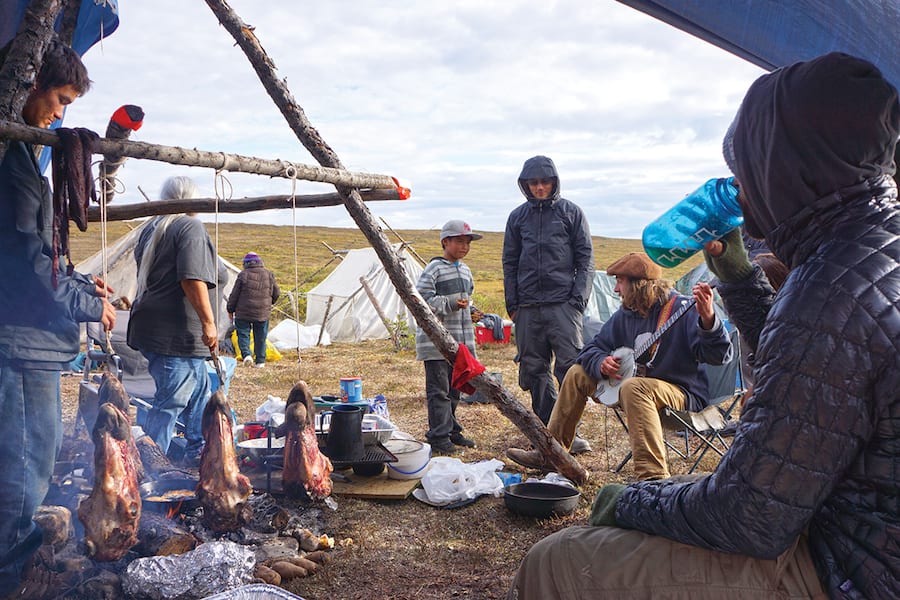
Tom Letson plucks a banjo as caribou roast during a trip to the Arctic National Wildlife Refuge
Sarah James and the Arctic Refuge
In 1988, the Gwich’in gathered as a tribe for the first time in over a hundred years. Word had spread that the Arctic Refuge was about to open for oil and gas development.
In addition to calling the refuge home, the Gwich’in share the land with various aquatic species, migratory birds and mammals. As a culture, they are inextricably linked to the Porcupine caribou herd. They believe that there is a little bit of caribou in the hearts of each Gwich’in, and there is a little bit of Gwich’in in the hearts of each caribou.
Every spring, the Porcupine herd travels to the Coastal Plain, the northernmost portion of the Arctic Refuge, to birth their young. It’s an area known federally as the 1002, the same area the oil industry seeks access to drilling. With the prospect of fossil fuel development proposed for the Coastal Plain, the threat of disrupting the well-being of the herd, and the livelihood of the Gwich’in, was the impetus to gather the tribe.
At the gathering, eight representatives were chosen by tribal elders to share the story of the people and the land with outsiders. Their hope was that these representatives would help to mobilize support for what they understood as a threat to their well-being. As Sarah shared, “We knew we needed help beyond ourselves to protect the refuge.”
Sarah is a winner of The Goldman Environmental Prize, a prestigious international grassroots environmental award. She has fought tirelessly for her people over the past 30 years with an understanding that the issue also has implications that extend far beyond her homeland.
Over the course of three summer sessions, Sarah, along with other elders and community members of Arctic Village, conveyed the oral history and more recent updates to my students and me as we worked alongside them in a field course supported locally by Sierra Nevada College.
What struck me after each meeting was the uniqueness of how each student came away inspired in their own way about issues related to opening the Arctic Refuge to oil development, and how the greater messages of community and ecological health translates to them back in Tahoe.
In the Arctic Refuge a group of indigenous people are fighting to save their way of life. They are spiritually connected to the Porcupine caribou, a species that also offers them economic subsistence. The caribou’s calving grounds are also ground zero for oil interests in the region. Drilling in this area, the 1002, will not only disrupt the ability of the caribou to give birth uninterrupted as they have, the development activity will undermine the health and well-being of the greater ecosystem—one that supports black, grizzly and polar bears, hundreds of migratory birds that travel from all 50 states and six continents to the refuge each year, and diverse marine species from fish to whales.
“America’s Serengeti,” as the Arctic Refuge is often called, has coexisted through dramatic changes over the past several decades as the Industrial Revolution has brought the current age of climate change to all corners of the globe—a reality exacerbated in the world’s polar regions. As much as this land should be managed and maintained by the indigenous people who have called it home for generations, a federal wilderness designation is the only way to keep it protected.
My students would always feel overwhelmed at some point during our time in Arctic Village learning the history of oppression indigenous people have faced, combined with the ecological reality of climate change and what the perpetuation of a fossil fuel–based economy means to the future of life on Earth. But at some point, armed with copious amounts of new-to-them knowledge, and this firsthand experience, they would channel their thoughts and feelings into uplifting forms of action.
One Sierra Nevada College graduate returned to her roots in New York City, where she curated an art show mostly built around photos she took while on the field course in 2016. Another graduate from this first trip in 2014 found work with the Sierra Club directly related to Arctic Refuge activities. Sierra Nevada College’s 2015 valedictorian has written music and created artwork born from his time in the field course.
In addition, countless letters to editors have been penned, petitions have been signed and conversations started supporting Arctic Refuge protection—and highlighting related struggles of climate change and resource use. Several of us gathered last fall in Reno to present U.S. Senator Dean Heller with handwritten letters from local Tahoe high school students about why he should support Arctic Refuge protection.
This past May I met two more recent Sierra Nevada College grads—who never actually had the chance to travel to the Arctic Refuge—in Washington, D.C., to directly lobby Congress on behalf of the Arctic Refuge with support from the Alaska Wilderness League.
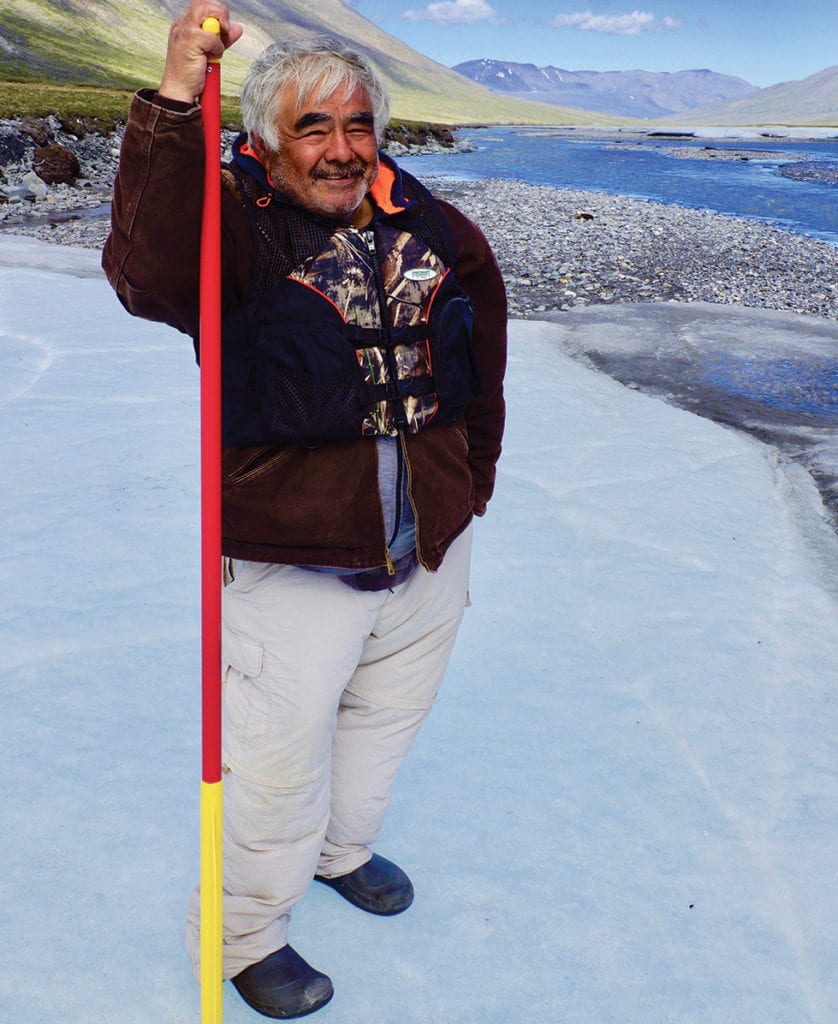
Inupiat Leader Robert Thompson pauses for a smile along the Hulahula River
The Hulahula River
The power of positively identifying with one’s home is profound. Robert Thompson, an Inupiat elder from Kaktovik, the only village located within the boundaries of the 1002, shared, “I initially got into protecting the Refuge because I didn’t want to live in an oil field. But now I see how important this fight is for the whole world.”
Like Sarah, Robert has fought tirelessly to protect the Arctic Refuge. We worked together on a project in Kaktovik in the winter of 2017 and this past summer linked up to float the Hulahula River, a braid of glacial water whose headwaters begin in the heart of the refuge and end at the Arctic Ocean. Robert knows the land as well as anyone and is firm in his stance that action is crucial to the movement. The more he and others can get the word out about protecting this special place, the better.
These past two trips to the Arctic Refuge working with Robert, I also had skis in tow. I’d never traveled to a mountainous region without my skis so many times, but I knew when the timing was right some skiing would happen.
Our Hulahula trip was otherworldly. Small herds of Porcupine caribou passed us daily, making the annual calving pilgrimage to the Coastal Plain, aggregating with the greater herd along the way. We saw grizzly bears roaming freely both up and downstream from us, and the bird diversity grew daily as we floated closer to the Coastal Plain.
A few ski turns were made on distant peaks, but what echoed most saliently throughout the trip was just how incredible this small corner of the world is, as well as how easily it can be gone.
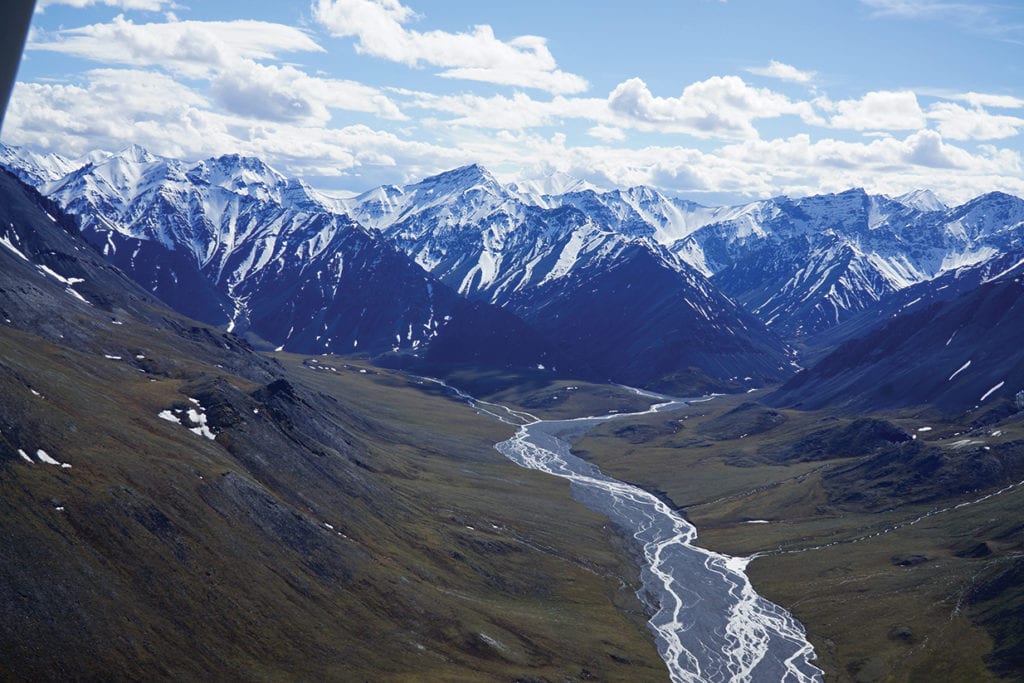
The Brooks Range and the headwaters of the Hulahula River
Solidarity
Although polls indicate that a majority of Americans support protecting the Arctic Refuge, the current administration has moved swiftly to allow oil companies access to drilling.
The refuge is the closest it has ever been to becoming an oil field, and yet, the amount of oil believed to exist in the refuge is a drop in the bucket compared to the already accessible oil on Alaska’s North Slope. This has become a symbolic fight, one that prioritizes business as usual over the potential to recognize what will be lost forever if drilling commences.
In the same way Tahoe residents would be aghast if the retired plans to build a bridge or tunnel in Emerald Bay were brought back to life, many in Alaska and throughout the world feel the same way about oil development in the Arctic Refuge. The last time it was this close to being opened was in 1989, a year after the monumental Gwich’in gathering. But the publicity of the Valdez oil spill took it off the table. That was a massive bullet dodged some 29 years ago, and today it seems the only way to dodge it again, barring another oil disaster, is to get as many people voicing their support for protection as possible.
That’s what Sarah, Robert and so many others have been working for and will continue to work for until the Arctic Refuge is once and for all protected.
In addition to the ongoing work of the Sierra Club, the Alaska Wilderness League is an organization that supports Arctic Refuge protection. To learn more about how to support their cause, go to www.alaskawild.org.
Brennan Lagasse has worked on sustainability issues for the past two decades. He is a local and international ski guide, as well as an educator working with Prescott College, Sierra Nevada College and the Ice Axe Impact School. Learn more at instagram.com/stateofthebackcountry.




No Comments